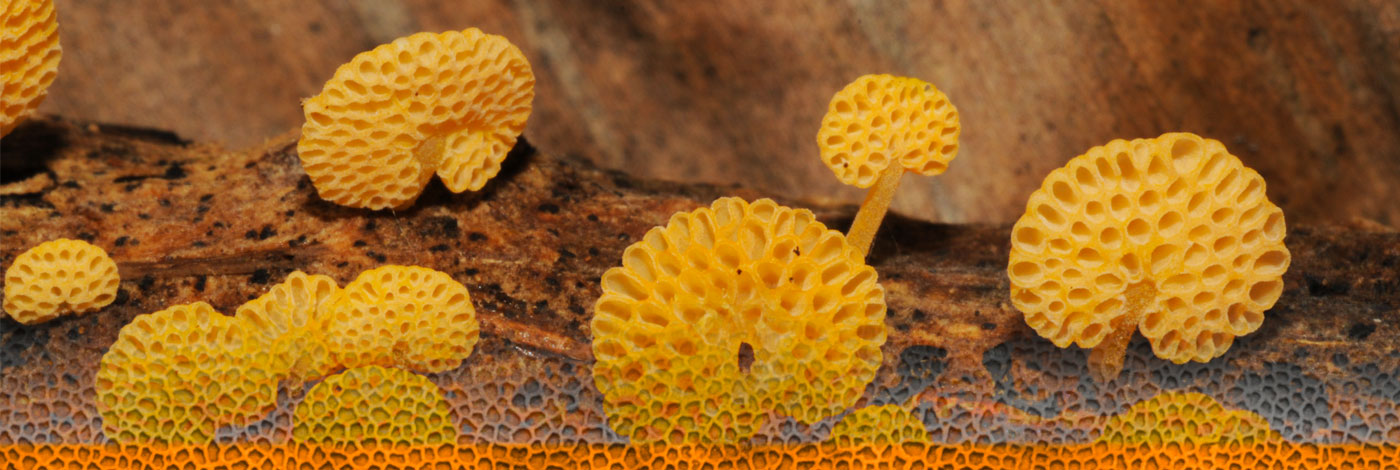
 Cryptogamie, Mycologie
28 (2) - Pages 107-121
Cryptogamie, Mycologie
28 (2) - Pages 107-121A comparative study of the detection capacity of enzymatic activities in 22 wood-rotting Basidiomycetes from Cameroon using substrates of various chemical sensitivities in spot tests was undertaken for the first time with a thorough investigation and accurate determination of the reaction time margin of syringaldazine. Syringaldazine is one of the rare substrates with a fading shift in colour in positive tests, but until now its reaction time margin in spot tests from mycelial cultures has been inaccurate. In spite of some cases of convergent results, the laccase specific substrates α-naphtol and syringaldazine generally showed more or less important differences in their ability to detect this enzyme with a highly varying time-dependent detection level according to substrate and species. Positive tests with syringaldazine, interpreted for the first time using a colour chart, could be recorded between 1s to about 120 mn and in some cases up to 180 mn according to species, with maximum laccase activity recorded between about 5 to 30 mn. α-naphtol reactions took longer and our results enabled us to refine the range of this reaction time from about 30 mn to 72 H with maximum laccase activity recorded between 1H to several days after the test, thereby demonstrating for both substrates enormous differences in the time-dependent shift in colour and sustainability during laccase detection. Tincture of guaiac and guaiacol used to detect unspecific polyphenol oxidases showed the same inconsistencies trend as α-naphtol and syringaldazine in spite of some cases of similar detection level. 14 species that tested positive with tincture of guaiac were identified as white rot fungi, whereas 8 testing negative were classified as brown rotters. Various levels of laccase, tyrosinase and peroxidase activities were recorded in the 22 species, and led to the determination of 5 taxonomic groups based on polyphenol oxidases.